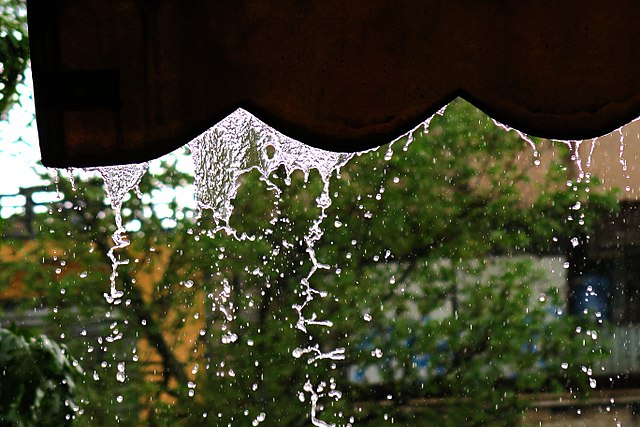Acid rain is rain or any other form of precipitation that is unusually acidic, meaning that it has elevated levels of hydrogen ions. Most water, including drinking water, has a neutral pH that exists between 6.5 and 8.5, but acid rain has a pH level lower than this and ranges from 4–5 on average. The more acidic the acid rain is, the lower its pH is. Acid rain can have harmful effects on plants, aquatic animals, and infrastructure. Acid rain is caused by emissions of sulfur dioxide and nitrogen oxide, which react with the water molecules in the atmosphere to produce acids.
Acid rain
Acid clouds can grow on SO2 emissions from refineries, as seen here in Curaçao.
Since 1998, Harvard University wraps some of the bronze and marble statues on its campus, such as this "Chinese stele", with waterproof covers every winter, in order to protect them from corrosion caused by acid rain and acid snow
The coal-fired Gavin Power Plant in Cheshire, Ohio
Water is a polar inorganic compound that is at room temperature a tasteless and odorless liquid, which is nearly colorless apart from an inherent hint of blue. It is by far the most studied chemical compound and is described as the "universal solvent" and the "solvent of life". It is the most abundant substance on the surface of Earth and the only common substance to exist as a solid, liquid, and gas on Earth's surface. It is also the third most abundant molecule in the universe.
Properties of water
Dew drops adhering to a spider web
Rain water flux from a canopy. Among the forces that govern drop formation: Surface tension, Cohesion (chemistry), Van der Waals force, Plateau–Rayleigh instability.
This paper clip is under the water level, which has risen gently and smoothly. Surface tension prevents the clip from submerging and the water from overflowing the glass edges.








